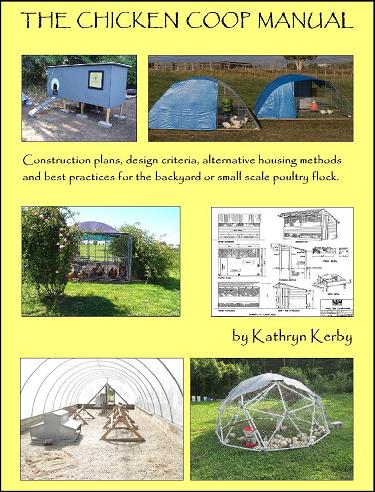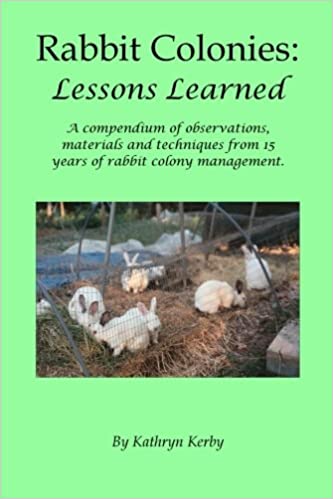Gardening Books
We have amassed a tremendous collection of gardening books over the years. Some of those books still live on our bookshelves, untroubled by frequent contact with dirty fingers fresh from the garden. Others bear the smudges from years' worth of being pulled off the shelf to answer questions about soil quality, blossoming, fruit set, harvest schedules or cold weather protection. Pictures of plant diseases and bugs are dogeared so they can be found faster. The covers are dotted and blurred with rain splatters from years past as they went out into the fields with us. And they rarely ever see the bookshelves, because they're always on the desk or the living room table or the nightstand for quick reference. These are the gardening books we've listed below.
If you have questions about planting methods, season extension, pest control, fertility management or saving the harvest, these gardening books give you a lot of good options to choose from. We hope you find what you're looking for in this list, or that perhaps one or more of them catch your interest. We sure enjoy going back through these gardening books to find answers. We also page through them whenever we just need a reminder of what ideals we're working towards. Enjoy browsing our gardening books collection, and we hope you find some answers here!
Planting Methods
The New Self Sufficient Gardener, by John Seymour
I have the original edition of this classic gardening book, and it is one of the most worn-out, dog-eared, smudged books I own. And proudly so. It has been the book I look through in January when the sun is threatening to never show her face again. It's the book I read in March to make sure I've got my garden prepped for the growing season which is just getting underway. It's the book I read in July when I need to remind myself why I've volunteered for all this production frenzy, and it's the book I read in September when the year is winding down and I start to think about next year. It cheers me up when I'm down, it gets me moving in the right direction when I've gotten off track. If I was marooned on that hypothetical desert isle and could only have a few books with me, this would be one of them. We use just about every single method, philosophy and piece of equipment listed in this book, or one of its descendants. I can't recommend this gardening book highly enough.
How to Grow More Vegetables... by John Jeavons
This is my other favorite gardening book, and it very nicely complements the Self Sufficient Gardener book listed above. Much of the information in this book is complementary, but not redundant, with that first book. This book is chock-full of how-to information, particularly in terms of the double-dig method of intensive planting beds. Additionally, the book provides extensive planning tools to make the most of whatever space and growing season you have to work with. Additionally, this book contains a veritable encyclopedia of growing information about a huge variety of plants - vegetables, grains, fodder plants, fiber plants, berries, nuts, stone fruits, roots and herbs. I don't think I've ever raised a plant which wasn't listed in this book. When I need to know how many plants to seed in a certain size growing area, or what yields to expect, this is the gardening book I reach for. Additionally, John Jeavons and his Ecology Action organization continue their work promoting sustainable agriculture all around the world, especially in a variety of poverty-stricken nations that need to improve their food security. I would recommend this book just in support of that effort alone, but I'm also happy to recommend it for all the great information it contains. My copy of this book is just as beat up as my Self Sufficient Gardener book described above; they both occupy places of honor within easy reach of wherever I happen to be working.
The Four Season Harvest, by Eliot Coleman
This well regarded gardening book addresses a topic which many of us would classify as fantasy: growing vegetables all year round. And no, Eliot Coleman does not live on some tropical beach where frost is an unknown event. He farms in Maine, which has as many growing season challenges as anywhere else. Nevertheless, he has long been a champion of a year-round garden. More specifically, harvesting year round from a garden that makes the most of whatever growing season is available. This book shows how he does this, and how others can do it too. We have adopted many of his principles and have dramatically extended our growing season as a result. We haven't quite mastered year-round harvests yet, but we are a lot farther along than we were before reading this book. His methods are appropriate for either farmers or gardeners, and I know quite a few who in both groups who use his methods successfully. It is high time we move beyond the thought that we can only grow, and harvest, during a few short months. This gardening book will show you how to spread your harvest throughout the year, and enjoy the effort.
All New Square Foot Gardening by Mel Bartholomew
Square foot gardening is a wonderful approach for either home gardeners or small-scale farmers. The concept is amazingly simple - instead of thinking in terms of rows, think in terms of square footage. Each plant, large or small, uses a predictable amount of square footage for its topside growth and root mass. When growers know that preferred spacing, we can set up planting beds almost anywhere to grow almost anything. Mel Bartholomew has worked out how much space veggies need, and how to set up blocks of veggies next to each other to make the most of whatever growing area you might have. This approach isn't quite the same as double-dig planting as described in either Self Sufficient Gardener or How To Grow More Vegetables, but this approach dovetails very well with that method. We have used square foot gardening planting arrangements in double-dug beds with extremely good results. Even as we have grown in scale such that we don't double-dig all our beds every year, we still use the square foot gardening approach in our production beds. If you have limited space, this gardening book is even more valuable because it will help you mix and match what you want to grow, in whatever space you have. Now that's a powerful combination.
Lasagna Gardening by Patricia Lanza
Lasagna gardening is another fabulous concept, where the author has figured out a way to make veggie growing a whole lot easier. As the title implies, she has developed an approach that uses layers to create the ideal gardening soil. But where most books would tell you to dig deeper, she advocates piling it higher - piling up one layer after another of natural materials such as leaves, compost, sawdust, woodchips, grass clippings, newspaper or cardboard, even shredded paper. Whatever combination of high-nitrogen and high-carbon materials that the grower has easy, inexpensive access to using. The goal here is to create something of a living, breathing, planted compost pile. The pile never heats up as much as a regular compost pile would, because it doesn't have the minimum volume required. But the roots spread through that mass and gleefully take up all the nutrients they need to support the plant. Over time, that pile matures and changes into the soils which we all wish we'd been blessed with from the start. But as the author happily points out, we didn't break our back digging to make it that way. This gardening book is definitely applicable for home gardeners, who can have the garden of their dreams even if they start with sterile hardpan. Oddly enough it also has relevance for commercial growers who can benefit just as much as smaller scale growers. On a commercial scale, this approach may well work out to be competitively priced, compared to the more conventional costs of tillage, fertilization, and cultivation practices. This particular gardening book is definitely worth a read, and its methods are worth at least some experimentation on your own place.
Alternative Crops
Small Scale Grain Raising by Gene Logsdon
Many folks are newly curious about raising small grains for themselves, their families, their customers and their livestock. Whether it's concern about GMO's, the high cost of retail grains, the cost of feed or simply a desire to grow our own, interest in small grain production has exploded. While the modern view of grain production brings to mind vast acres of monocrop wheat, barley, rye, oats or corn, harvested by massive machines, small grains production can be done very successfully, and cost effectively, on a small scale. Gene's book was one of the first gardening books which reminded us of that, and he did so very well. I've had this book for almost 20 years and we have modeled much of our small grains production plans on his writings. Our copy of this book was outdated in a number of ways, but this newer version has been updated with modern suppliers of seed and equipment. We heartily encourage anyone who wants to grow their own grains, to forge ahead and do so. It's hard to go wrong with small patches of grain somewhere in the garden or on the farm. And Gene's writing reminds us all of the larger issues at work - the lifestyle, the land stewardship, the partnership between human, plant and animal. Others have written about the ins and outs of small scale grain production. Few write about it as well as he does.
Homegrown Whole Grains by Sara Pitzer
This little book is dedicated to the home gardener, rather than the small scale farmer. But where Gene's book described above gives small-scale farmers all the information they need to succeed, Sara's book does the same for home-scale gardeners. She shares how-to information for soil prep, variety selection, cultivation, harvesting, and even recipes. If you've ever admired waving fields of grain and wondered how to replicate that in your own back yard, this is the gardening book for you.
Home and Small Farm Harvest Storage
Root Cellaring, by Mike Bubel
After the harvest, what do we do with all the bounty? Refrigeration and freezing are only two options, and rather costly options at that. Traditional methods for food preservation are still an excellent, cost-effective way to preserve the harvest. Root cellaring is one such method, where root crops are stored in large rooms, at cool but not cold temps, achieved with a variety of low-tech methods. Go ahead and plant way too many carrots and potaoes, if you like carrots and potatoes. You don't need a refrigerator the size of a bus. You just need a root cellar. This gardening book will show you how to design it, build it and organize it for maximum efficiency.
Stocking Up, Third Edition, by Carol Hupping
This is an extraordinary book. First, it provides a huge assortment of ways to preserve just about any food crop imaginable. It covers the standard canning methods to make jams and jellies, which by itself would make it a valuable book. But it goes further to present additional alternatives to preserve and use the harvest - not only veggies but also dairy products and meats. As if that wasn't enough, it also provides regularly updated information on which varieties are best for long term storage. Home gardeners and growers no longer need to guess which varieties will store well. This book helps them choose those varieties and breeds which will not only produce well, but store well. If you want to build a pantry from your harvest, this is a very helpful step in that direction.
Ball Complete Book of Home Preserving
This is one of the gardening books which will save you a tremdous amount of money. The Ball Canning Company has been in the food preservation business for a long time, and they are the de facto authority on all the details associated with canning. If you've never canned anything in your life, this is the book to get to show you how. If you've been canning for a long time and want to update your recipes, this updated authority is the be-all, end-all source of information. If the Ball Book says this particular fruit, vegetable, meat or dairy product needs X temperature at Y pressure for Z time to be stored safely, you can take that to the bank. Or to your pantry, whichever is more precious to you.
Seed Saving Methods
Seed to Seed, by Suzanne Ashworth
In ages past, saving seed from any given year's production was standard practice. From those saved seeds, new varieties were born and bred to better meet local conditions and priorities. That information has not been lost; it just isn't as common as it used to be. But this gardening book changes all that. If you've got a favorite variety no longer available in catalogs, this book will show you how to preserve it. If you've got precious hand-me-down seeds from family and friends, this gardening book will help you germinate them successfully and choose the best candidates for the next generation. For anyone interested in self reliance, either on a home-garden scale or a commercial farm scale, this book is a crucial piece of the puzzle.
Our Successful Farming and Ranching Books

We released our very first self-published book. The Chicken Coop Manual in 2014. It is a full color guide to conventional and alternative poultry housing options, including 8 conventional stud construction plans, 12 alternative housing methods, and almost 20 different design features. This book is available on Amazon.com and as a PDF download. Please visit The Chicken Coop Manual page for more information.

Rabbit Colonies: Lessons Learned
We started with rabbits in 2002, and we've been experimenting with colony management ever since. Fast forward to 2017, when I decided to write another book, this time about colony management. The book is chock-full of practical information, and is available from both Amazon and as a PDF download. Please visit the Rabbit Colonies page for more information.
The Pastured Pig Handbook
We are currently working on our next self-published book: The Pastured Pig Handbook. This particular book addresses a profitable, popular and successful hog management approach which sadly is not yet well documented. Our handbook, will cover all the various issues involved with pastured hog management, including case studies of numerous current pastured pig operations. If you have any questions about this book, please Contact Us.

Weblog Archives
We published a farm blog between January 2011 and April 2012. We reluctantly ceased writing them due to time constraints, and we hope to begin writing them again someday. In the meantime, we offer a Weblog Archive so that readers can access past blog articles at any time.
If and when we return to writing blogs, we'll post that news here. Until then, happy reading!




